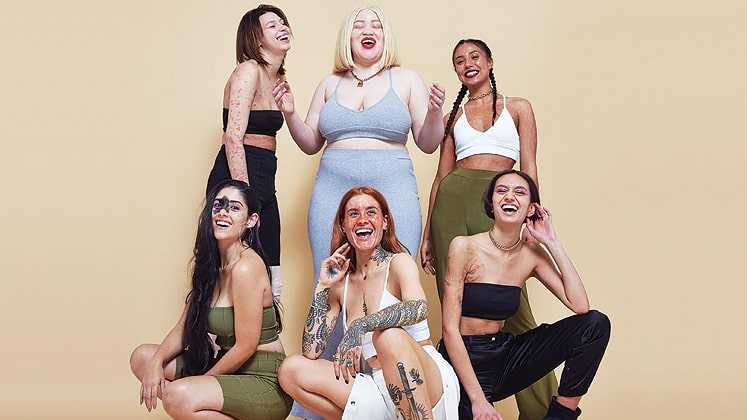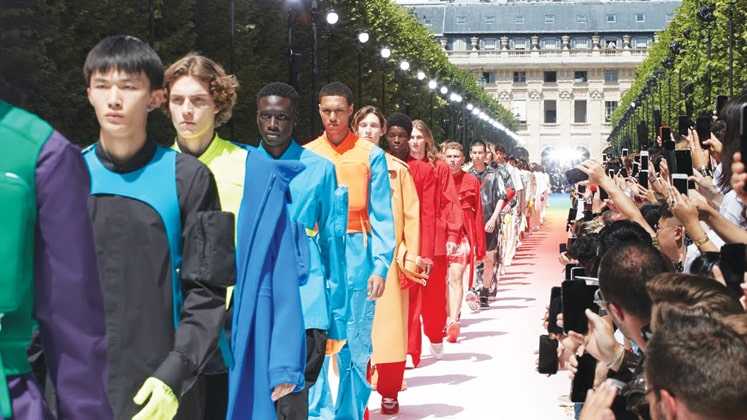
Pants and culottes, the most staple choice of any woman, encapsulate gravitating importance of signifying the class of the working woman who left the bounds of corsets to set her foot out in the post-World War world. Not just limited to history, Fashion and Politics have paved a path to the present hand-in-hand, shaping the norms of the other.
The go-to design inspiration for contemporary designers, Fashion Activism, was coined by the famous designer Céline Semaan, Founder of tech lab Slow Factory. who stated that, “Fashion Activism simply means using fashion to implement social and political change.” She championed the term by retailing an assortment of socially conscious fashion garments and accessories for social causes, such as the ‘Banned’ scarf to revolt against American President Donald Trump’s Muslim Ban or the ‘First Amendment Jacket’ featuring the First Amendment written in Arabic to show disagreement towards crimes against American Muslims.
Examples are multifold and of varying magnitudes, from the global platform where the peace sign symbols broke the market during the hippie movements to Trump supporting hats that said ‘Make America Great Again’ during the 2016 electoral campaign in America that retailed to show profits up to 40 per cent for small retailers which sold them.
A Timeline of Change
Several movements throughout history were promoted better using the power of attire. Suffragettes used colour to communicate and spread the idea of votes for all: purple for dignity, white for purity and green for hope. Recently, high fashion retailers Liberty and Selfridges put an assortment of tricolour ribbons, underwear, bags and soaps on retail to uphold the dignity of the woman in everything.
Taking a page from the leaflets of history, several fashion movements conform to the new fashion strata to emphasise a point. The Black Panther spirit of 1960s and 1970s was evoked by a simple accessory of the era: the beret. Famously a fashion feminist, the Creative Director of Dior, Maria Grazia Chiuri, unveiled the Dior collection of leather berets by Stephen Jones with every attire, representing an army of strong and independent women. For her latest Spring 2019 Paris Couture Week collection, she again showcased an inclusive circus inspired collection that opened with troupe of all-female acrobats of different body shapes performing around the models that flaunted feminine silhouettes in crisp corporate lines.
Social Identity, Inclusivity and Representation
Amidst diverse consumer groups influencing social, broadcast and print media, ‘inclusive fashion’ was born. This trend caught fire in year 2017, when the American President called transgender community a ‘burden’ and started his campaign with ‘Grab them by the pussy’.
A sudden outburst of rainbow colours laced over layers of garments was then triggered. Numerous fashion retailers introduced collections supporting the community. The mecca of basics, Calvin Klein launched Calvin Klein Pride capsule and donated the revenue collected to Human Rights Campaign, while Gap Inc. launched the ‘Wear Your Pride’ collection and H&M introduced its first-ever ‘Cohesive Collection’ dedicated to support the LGBTQ community. Other major names that were soon to join the movement were Kenneth Cole with the Pride Kam Sneakers, J Crew’s ‘Love First’ collection, Tommy Hilfiger’s inclusion of rainbow colours in their logo and Speedo’s rainbow swimwear collection. Nike, Levi’s, American Apparel and Adidas joined the community too.

The movement also gave rise to smaller retail groups such as e-retailer Ease-In-Tees and Queer Theory which retail clothes, accessories and jewellery reprising the LGBTQ along with.
The era of Gender Fluid fashion on runways is emblematic of how gender norms no longer dictate the runways. The trends are changing globally as was seen in the gender-neutral Spring and Fall 2019 collections of designers such as Stockholm’s Selam Fessahaye; Copenhagen’s Stine Goya; Dutch designers Viktor Horsting and Rolf Snoeren; Hedi Slimane of French fashion brand Celine; American designer Harris Reed and quirky fashion house Moschino.
With body positivity as a trending notion, Michael Kors showcased its first body positive collection in NYFW Fall 2017, while Dolce & Gabbana presented its Spring 2019 RTW collection through a plethora of models without any age, size, race or gender bar. Brands like Good American and Nike launched the plussize collection for sportswear, while e-retailers like ASOS and ModCloth introduced their plus-size lines for e-commerce. Street-inspired brand Forever 21 introduced plus-size denim line 12×12 and broke the internet with instrumental campaigns. With the fire caused by Me Too and Time’s Up movements, the task of rebuking against sexual harassment was taken up by Victoria Beckham and Prabal Gurung fashion lines.
A staple fashion statement or a radical fashion practice, an outfit can mean both, or either for the wearer. Thus, the utilisation of fashion to make a difference is exactly what the industry is opting for. It has two-way benefits – the involvement of the consumer in something bigger and the subsequent profits that are ensured for the retailers. This is the Trickle-down Theory of Fashion: the ramp starts it; the hangers follow it and then the consumer understands it.

Post a Comment